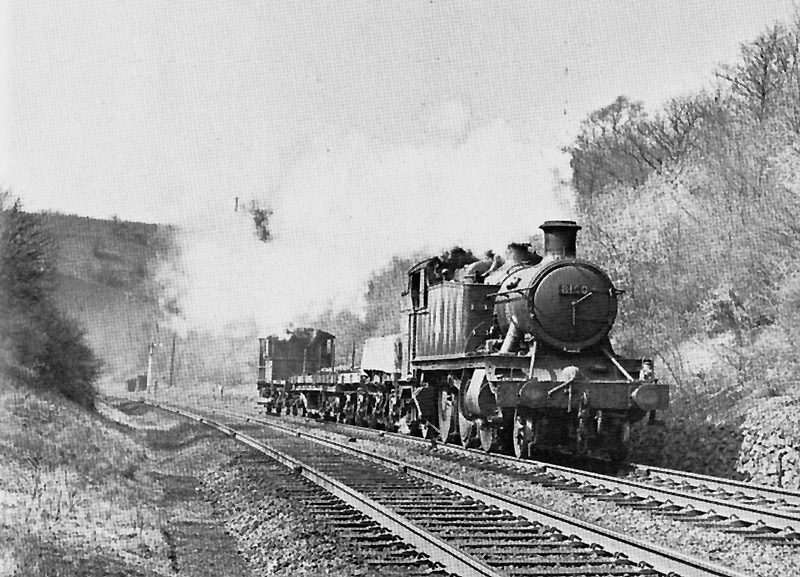 |
|
GWR Route: Banbury to Wolverhampton
Harbury Cutting and Tunnel: gwrhc1486
 |
Ex-Great Western No 8100, a large 2-6-2T prairie tank engine in
unlined black British Railways livery travelling south away from Harbury
tunnel. The train’s headcode indicates that this is a Class K train
(freight, mineral or ballast train stopping at intermediate stations or
in-section) and the assortment of wagons confirm that this is a local pick-up
freight from Leamington. This engine was Churchward’s original prototype
locomotive for a large banking engine design and was built at Swindon in
September 1903 as No 99 (Lot 140, Works No 1992). After a thorough trail,
another thirty nine engines (Nos 3111 to 3149) were built in 1905 and 1906. No
99 was slightly different having a short-cone (D2) boiler and straight topped
side tanks. One other noticeable difference was that the cab sides were not
flush with the tanks but set slightly inwards. By 1909, it was found that
several of the class were suffering from stress problems at the front of the
frame and to provide extra support, struts were fitted between the smokebox and
buffer beam.
The boiler of No 99 was changed to a long-cone type in October
1910 and fitted with a 12/72 superheater in September 1912. In December of that
year No 99 was renumbered No 3100. In 1919 the boiler pressure of the entire
31XX Class was increased to a standard 200lb, resulting in the tractive effort
increasing from 23,690lb to 24,300lb. Over the next three years these engines
also had their coal bunkers extended to provide capacity for an additional 18
cwt of coal. Between 1927 and 1930 the whole class was rebuilt to give a better
weight distribution and reduce the maximum axle weight to under 17 tons 12 cwt,
which enabled the engines to be used on Blue routes and thus increased their
range of operation and the work that they could carry out .
On completion of the rebuild the engines were renumbered and
became part of the 51XX Class. No 3100 therefore became No 5100 in April 1929,
after the rebuild which also saw the non-standard side tanks altered to the
sloping pattern. Automatic train control (ATC) was fitted to the whole class
between July 1930 and August 1931 and after this change the engines were mainly
allocated to Wolverhampton and Birmingham Suburban Passenger Services. In 1934
No 5100 was known to be allocated to Tyseley Shed. In May 1938 No 5100 was
withdrawn and the frames and other serviceable parts used to build No.8100.
This locomotive had a even higher pressure (225lb) boiler fitted and slightly
smaller wheels. These changes improved acceleration for suburban duties. Under
Lot 320, it was intended to convert the whole class, but only ten of the 51XX
Class were altered at Swindon between March 1938 and November 1939 (when the
war intervened and the programme was suspended). When new No 8100 was known to
have been allocated to Leamington shed and was also there in December 1947.
Smokebox number plates were fitted to the 81XX Class sometime between November
1948 and August 1952. No 8100 was fially withdrawn in October 1962.
Robert Ferris
 back back

|
